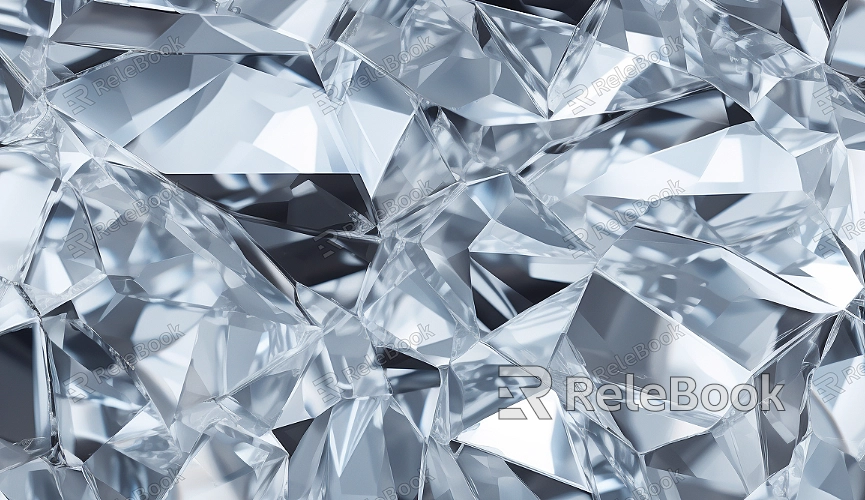What is 3D Textured Mesh
As a 3D modeling and rendering designer, I often encounter the challenge of combining textures with 3D meshes in my projects. Whether it’s designing characters for video games, creating virtual reality environments, or visualizing products, 3D textured meshes play a crucial role in enhancing the realism and detail of the models. By properly applying textures to a 3D mesh surface, we can significantly improve the model’s overall look and feel, resulting in more compelling renderings. In 3D modeling software like Blender, Maya, and 3ds Max, understanding and applying 3D textured meshes is an essential skill for every designer. This article will dive into what 3D textured meshes are, their common applications, the steps to create and optimize them, and how to solve some common issues that may arise during the process.

1. What is a 3D Textured Mesh?
A 3D textured mesh refers to a technique for applying textures to the surface of a 3D model. In 3D modeling, a mesh is a geometric structure made up of vertices, edges, and faces, while textures are images that add detail to these surfaces through a mapping process. Textured meshes are primarily used to enhance the visual details of a model, making it appear more lifelike. The process typically involves UV mapping, which "unwraps" the 3D model's surface into a 2D plane, allowing a texture to be accurately applied.
Application Areas: 3D textured meshes are widely used in fields such as game development, animation, virtual reality, and industrial design. For instance, in video game development, intricate character models and environmental assets require detailed textures to showcase realistic skin, clothing, metals, rocks, and other surface types.
2. How to Build a 3D Textured Mesh
Building a 3D textured mesh involves several steps, each essential to creating a realistic model. Below is a typical workflow:
Model Creation: The first step is to create a 3D model using a polygon modeling tool in a 3D software. This model can range from simple geometric shapes to complex organic forms, depending on the design needs.
UV Unwrapping: UV unwrapping is the process of flattening the 3D mesh’s surface into a 2D plane. This allows the designer to apply a texture accurately without distortion or stretching.
Texture Painting and Application: After unwrapping the UVs, the designer can paint or modify the texture using tools like Photoshop, Substance Painter, or other texturing software. Once done, the texture is mapped back onto the mesh using appropriate mapping techniques.
Detail Refinement: After applying the texture, adjustments are often made to its properties, such as reflection, transparency, and roughness, to ensure the texture appears realistic under different lighting conditions.
3. The Relationship Between Textured Meshes and Lighting
In 3D modeling, the effectiveness of a textured mesh is closely tied to lighting. Even if a texture is extremely detailed, it won't fully showcase its potential without proper lighting setups.
Normal Maps: A common texturing technique, normal maps add intricate surface detail to a texture, making the lighting appear more complex and realistic. They simulate small bumps and dents without increasing the polygon count.
Displacement Maps: Displacement maps modify the surface of a model by adjusting its vertices, creating highly detailed surface features. This technique is particularly useful for representing complex structures like terrain, rocks, and wrinkles.
Glossiness and Roughness: Textured meshes often include glossiness and roughness values, which control how shiny or matte a surface appears. Adjusting these properties allows the designer to control how the texture reacts to light, enhancing the material's realism.
4. Optimizing 3D Textured Meshes
When working with high-quality renders, optimizing 3D textured meshes is crucial, especially when dealing with complex models. High-resolution textures can severely impact performance. Optimizing them ensures better rendering speed and reduces resource consumption.
Texture Compression: Compressing texture images into smaller files can significantly speed up rendering and reduce memory usage.
Texture Atlas: A texture atlas involves combining multiple textures into one image, which reduces the computational overhead during rendering, particularly for low-polygon models.
LOD (Level of Detail) Techniques: LOD is a method that uses different texture resolutions for models based on their distance from the camera. Models farther from the camera use lower resolution textures, which helps save resources and improves performance.

5. Common Issues with 3D Textured Meshes and Their Solutions
While working with 3D textured meshes, you may encounter several common issues, such as texture stretching or seams appearing in the wrong places. Here are a few solutions:
Texture Stretching: If the UV unwrapping is incorrect, textures may appear stretched. To fix this, re-adjust the UV layout so that the texture is evenly distributed across the mesh's surface.
Seam Issues: Seams often appear where UVs meet, disrupting the continuity of a texture. This can be fixed by using seamless textures or adjusting the UV boundary to avoid visible seams.
Texture Distortion: Distortion often occurs in models with complex shapes. To fix this, tweaking the texture coordinates can help eliminate distortion and ensure the texture maps smoothly across the surface.
6. Real-World Applications of 3D Textured Meshes
In my own work, I've created 3D textured meshes for characters in a video game. Through careful UV unwrapping and detailed texture painting, I was able to bring the character’s skin, clothing, and accessories to life, which significantly improved the model's realism and fine details. These same techniques are also commonly used in product design and virtual reality environments to create more dynamic and polished visuals.
Through this article, we've explored what 3D textured meshes are, how to build and optimize them, and their essential role in enhancing the realism of 3D models. Whether in game development, movie production, or product design, textured meshes are crucial in achieving high-quality results. Mastering these techniques can help designers increase productivity and create more intricate and realistic 3D models. If you're looking for high-quality 3D models, textures, or rendering tools, Relebook offers a wide range of resources to help streamline your design workflow and achieve better results more efficiently.

